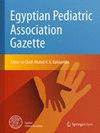印度儿科重症监护病房收治的儿童家庭的医疗和非医疗自费形式的经济负担
IF 0.5
Q4 PEDIATRICS
引用次数: 0
摘要
背景儿科重症监护病房(PICU)入住对家庭有重大影响,包括经济负担和心理困扰。他们不仅对孩子的健康和福祉极为关切,而且还面临着一系列实际和经济上的困难。应对策略在减轻重症监护病房入住对家庭的负面影响方面起着至关重要的作用。各种应对机制,如寻求社会支持,参与解决问题,利用情绪调节技术,可以帮助家庭应对他们面临的挑战。这项研究的目的是了解以自付费用形式出现的各种财务问题,并在更好地了解以医疗和非医疗费用形式出现的自付费用构成的情况下进行量化。它还旨在确定一个家庭生产时间的损失,并了解工作时间的负担与家庭收入的关系。方法本前瞻性观察性研究在一家三级医院的儿童重症监护病房(PICU)进行,为期6个月,经机构伦理委员会批准。与经济负担有关的数据是通过结构化问卷收集的,其中包括以下类别:旅行、膳食、住宿和杂费被视为非医疗费用,而所有药费和调查费用被视为医疗费用。定量数据以均数±SD表示,中位数为25和75百分位(四分位间距),采用方差分析(两组以上)和独立t检验(两组)进行分析。结果39例(55.71%)儿童未参加任何政府计划。医疗总费用和非医疗总费用的平均值分别为2525±4035.28和2234.29±846.84印度卢比。患者第1天、第2天、第3天、第4天、第5天每日总自付费用(印度卢比)平均值分别为1304±587.2、1208.86±3773.84、814.57±565.03、807.71±522.76、699.86±807.02。结论儿科重症监护病房住院患儿家庭发生了灾难性的医疗支出,其中医药费占主要份额。低收入阶层的经济负担比高收入阶层高出两倍以上。几乎所有家庭都经历了生产力的高度损失,因为孩子被送入PICU而损失了许多天。参加政府计划有助于减少外出工作人员,尽管需要更好地覆盖这些计划。本文章由计算机程序翻译,如有差异,请以英文原文为准。
Financial burden in the form of medical and non-medical out-of-pocket expenses on the family of children admitted to a pediatric intensive care unit in India
Abstract Background Pediatric intensive care unit (PICU) admissions can have significant repercussions on families, including financial burdens and psychological distress. Not only do they face the overwhelming concern for their child’s health and well-being, but they are also confronted with a range of practical and financial difficulties. Coping strategies play a vital role in mitigating the negative impact of PICU admissions on families. Various coping mechanisms, such as seeking social support, engaging in problem-solving, and utilizing emotional regulation techniques, can help families navigate the challenges they face. The objectives of the study are to understand the array of financial implications in the form of out-of-pocket expenses (OOPE) and to quantify with a better understanding of the composition of out-of-pocket expenses in the form of medical and non-medical expenses. It also aimed to determine the loss of productive hours in a family and to understand the burden of OOPE in relation to the income of the family. Methods This prospective observational study was conducted in the pediatric intensive care unit (PICU) of a tertiary care hospital over a period of 6 months after obtaining permission from the institutional ethics committee. Data pertaining to financial burden was collected with the help of Structured questionnaires which included the following categories travel, meals, accommodation, and incidental expenses were considered as non-medical expenses while all medicine costs and investigations were considered as medical expenses. The quantitative data were presented as the means ± SD as median with 25th and 75th percentiles (interquartile range) and were analyzed using ANOVA (for more than two groups) and independent t test (for two groups). Results More than half of the children (39(55.71%)) were not enrolled under any government scheme. The mean value of total medical and non-medical costs was 2525 ± 4035.28 and 2234.29 ± 846.84 Indian rupees. The mean value of total out-of-pocket expenses incurred per day (Indian rupees) on day 1, day 2, day 3, day 4, and day 5 were 1304 ± 587.2, 1208.86 ± 3773.84, 814.57 ± 565.03, 807.71 ± 522.76, and 699.86 ± 807.02 respectively. Conclusion Families of children admitted to the pediatric intensive care unit incurred catastrophic health expenditure with the cost of medicine contributing a major share. The lowest income brackets had much higher, more than twice the financial burden compared to the higher income group. Almost all families experienced a high loss of productivity in the form of a number of days lost due to the PICU admission of a child. Enrolment in government schemes helped to reduce OOPEs though better coverage of these schemes is needed.
求助全文
通过发布文献求助,成功后即可免费获取论文全文。
去求助
来源期刊

Egyptian Pediatric Association Gazette
PEDIATRICS-
自引率
0.00%
发文量
32
审稿时长
9 weeks
期刊介绍:
The Gazette is the official journal of the Egyptian Pediatric Association. The main purpose of the Gazette is to provide a place for the publication of high-quality papers documenting recent advances and new developments in both pediatrics and pediatric surgery in clinical and experimental settings. An equally important purpose of the Gazette is to publish local and regional issues related to children and child care. The Gazette welcomes original papers, review articles, case reports and short communications as well as short technical reports. Papers submitted to the Gazette are peer-reviewed by a large review board. The Gazette also offers CME quizzes, credits for which can be claimed from either the EPA website or the EPA headquarters. Fields of interest: all aspects of pediatrics, pediatric surgery, child health and child care. The Gazette complies with the Uniform Requirements for Manuscripts submitted to biomedical journals as recommended by the International Committee of Medical Journal Editors (ICMJE).
 求助内容:
求助内容: 应助结果提醒方式:
应助结果提醒方式:


